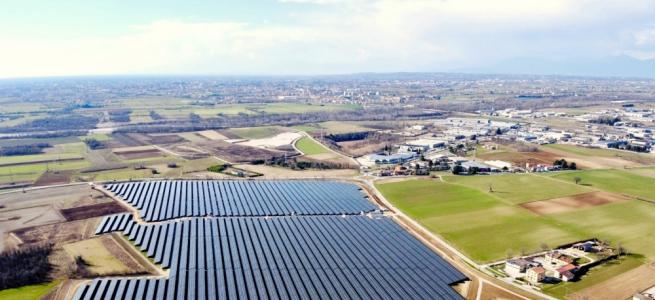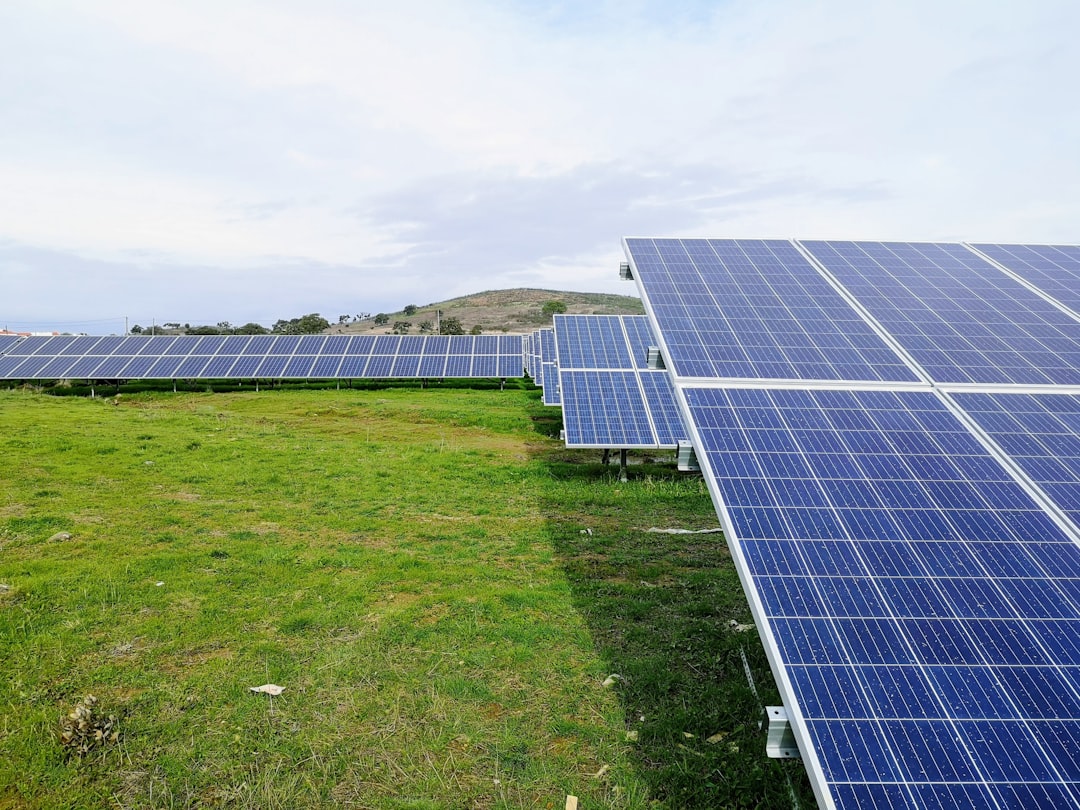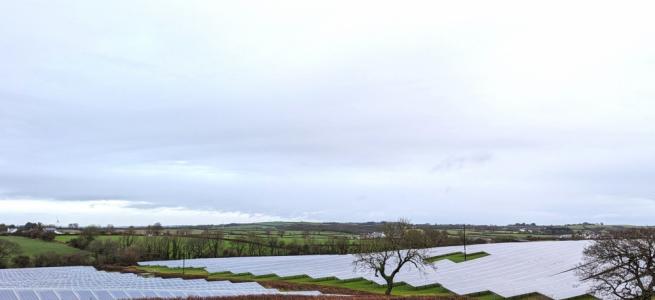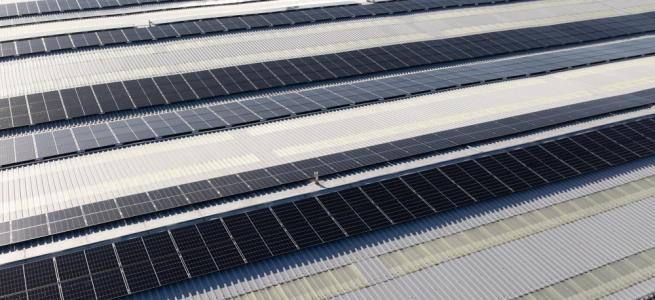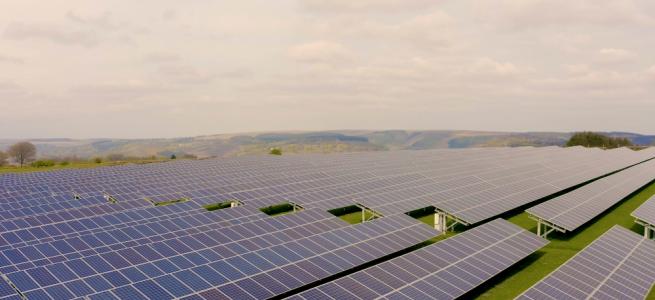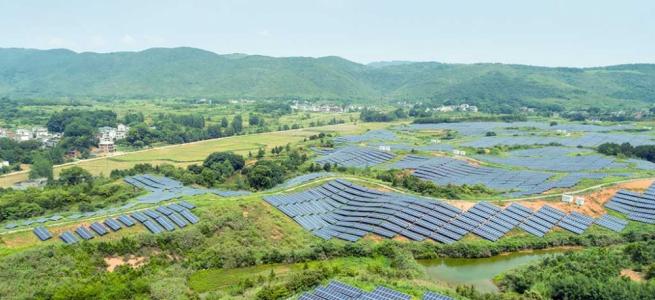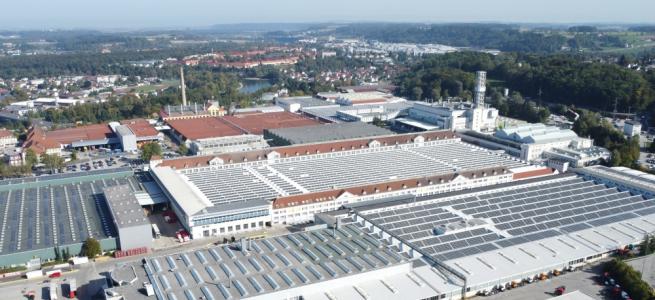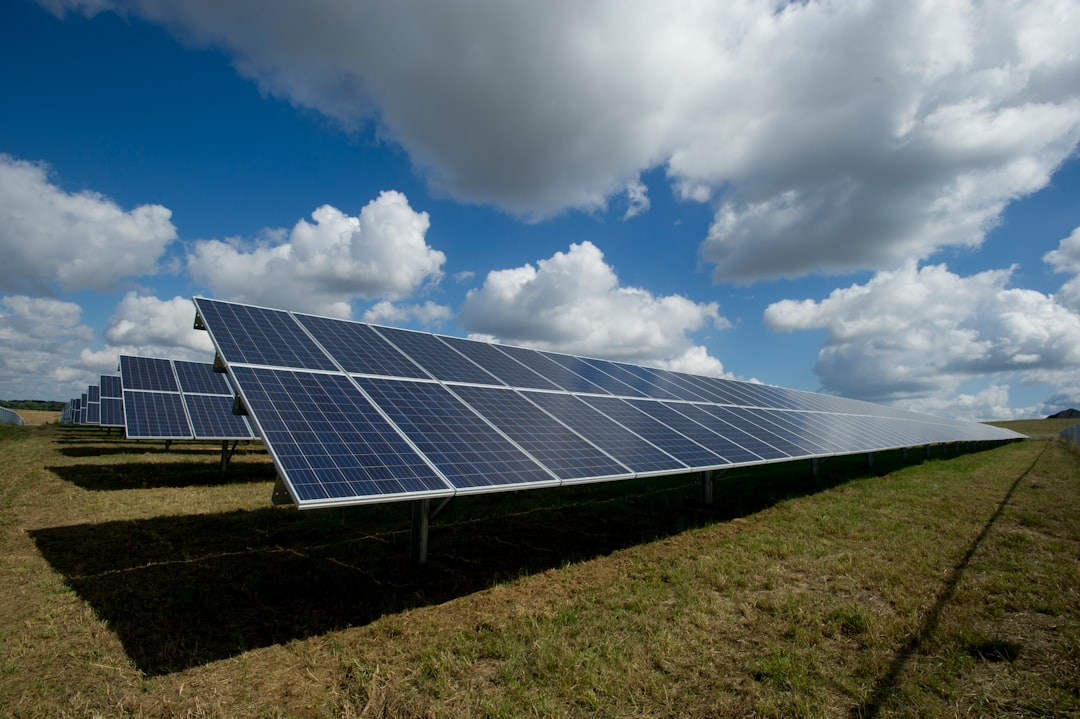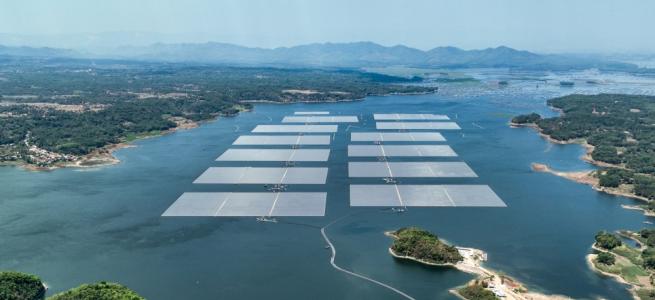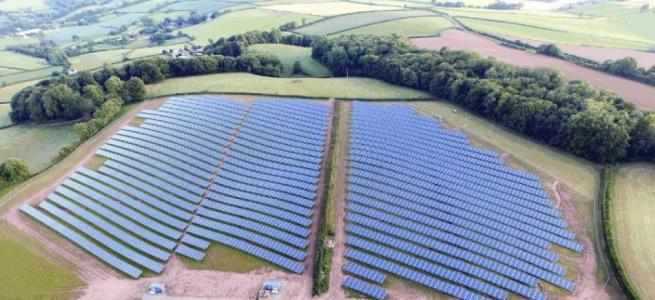Maintaining a GW industry

With new solar PV installations in the UK during the first half of 2013 reaching 802 MW, and with a three-year 1H demand CAGR exceeding 200%, it should come as no surprise that the UK has registered on the prospect lists of seasoned global industry veterans.
Judging by the numbers alone, the case for UK sales and marketing efforts is now beyond dispute. From MW to GW-plus annual status in just three years, supported by a cross-party industry alliance that is unknowingly mapping out a model case-study for managed PV adoption, and with the investment community delivering a wholehearted seal of approval on the industry's short-term economic viability, the UK PV industry has unquestionably come of age.
But, aside from the top-level accolades, what is on offer from the UK solar PV industry? Where is the demand coming from, going forward? Are there regions where solar PV is looked on favourably? And what exactly is in the pipeline of large-scale ground-mount projects aiming for completion ahead of scheduled ROC degression phases?
This article reviews the various segments of solar PV demand in the UK and discusses some of the trends and issues during the second half of 2013 and during 2014.
In particular, the article confronts the aspirations of the UK solar PV industry in seeking to have strong deployment across a range of different application types, including kW residential installations, small and large commercial rooftops and a sustainable GW+ ground-mount segment.
Residential rallies on reset
The UK solar PV industry is really a combination of the different segments in the marketplace: residential, small and large commercial rooftop and large-scale ground-mount. Each of these segments has its own subset of market dynamics, supply and demand factors, and issues related to financing and incentivizing.
Anyone arriving in the UK today and looking at the residential segment (itself a combination of new-builds, retrofits and social housing) may well see a managed FIT-based scheme with clarity in tariff rates and degression phases. Indeed, run-rates of 60-100 MW per quarter within this segment are by global standards extremely favourable.
During 2013, the global PV industry is forecast to install approximately 5.5 GW of residential PV capacity. What is more revealing is that 40% of this is from the Japanese market alone. In fact, the UK is likely to be ranked in the top-6 residential markets for 2013, with only Japan, Germany, Australia, and the U.S. having much stronger residential segments.
But why has the residential segment in the UK had such bad press in the past 12-18 months? Here, Figure 1 spells out the answer more clearly than any historical narrative could.
![]()
Figure 1:The long-term prospects for the residential market in the UK remain promising. Excluding the boom/bust created by the early FIT rates, the trailing twelve month figures indicate a stable market at the 400-500 MW level developing during 2014.
Between the start of 2010 (Q1'10) and today, there have been four phases that UK PV installers have been required to navigate through. These are shown by the four shaded zones within the graphic. The solid blue line then shows the trailing twelve months (ttm) of residential PV demand at the end of each quarter. The use of ttm metrics is particularly useful as this eliminates spikes in demand or seasonal effects. It also helps to illustrate the boom/bust cycle that has characterized the UK residential market.
Starting with the introduction of the FITs in 2010, the market grew moderately until Q1'11. Initial growth was largely in line with government plans. The problem for the government occurred during 2011 when global module prices plummeted and 2011 FIT rates then created a highly lucrative environment. This is shown in the FIT Boom (Uncontrolled) phase.
The inevitable decline in ttm levels was prompted by sharp cuts to the FIT rates (the FIT Reset phase), and it is only during 2013 that the residential segment can be considered to have stabilized with the 60-100 MW per quarter today translating to a 12-month average of 320 MW.
For illustrative purposes, a dashed line is shown here that bypasses the boom/bust cycle phase. This provides the basis for the forecasted scenario within the future FIT Rebound (Managed) phase.
Whether the UK residential segment can now grow in a controlled manner to reach the 500 MW ttm (annual) level by the end of 2014 is yet to be seen. However, the basis for this (through removing the artificial peak) appears sound and stands as a placeholder that legislators and installers can target for a sustainable growing end-market.
Finally, a fascinating statistic for the UK residential segment is to compare the UK to the U.S. Putting aside all the differences related to financing and policies, the biggest difference probably comes down to the different media relations campaigns for residential PV in the UK and the U.S.
If numbers were unavailable, and media campaigns and press coverage was anything to go by, you may think that the U.S. residential market was orders of magnitude larger than the UK market. The corporate engine that advertises and strongly promotes the residential segment in the U.S. is in a different league to UK based marketing efforts.
In reality, even with the downturn in the UK residential segment, during 2013 the UK residential market will be approximately 60% of the U.S. residential market. However, perhaps even more surprising, during 2012 the UK residential market was 10% higher than the U.S., a year in which precious few positive vibes were in evidence within the UK residential PV community.
Large commercial rooftops sagging
While is it possible to make a strong case for a residential rebound, the same cannot be said about the large commercial rooftop category. This segment is languishing somewhat, as a result of the FIT resets that were particularly unfavourable to all larger PV project sizes.
While the large-scale ground-mount segment was able to transition to the ROC scheme, and the government provided strong backing to this change, the large rooftop segment has been left pretty much in limbo.
This is reflected clearly in Figure 2 that shows the cumulative PV installed within the >100 kW rooftop category as a function of the cumulative PV in the UK. Since the start of 2012, the large rooftop category has trended at just 3% of UK PV capacity, with limited signs of any reversal in fortunes.
![]()
Figure 2: Currently, the large rooftop segment accounts for less than 4% of the UK's solar PV capacity.
Aside from leading supermarket chains (Sainsbury's and Morrisons) and luxury car plants (Bentley and Jaguar), a tiny fraction of large warehouse space is being utilized in the UK. This is of particularly interesting, given government rhetoric this year that has identified the large commercial rooftop segment as the obvious choice to prevent the large-scale ground-mount owning non-residential capacity additions out to 2020.
Globally, the large non-residential rooftop segment will account for over 20% of all new solar PV in 2013. Within the U.S., for example, the large commercial rooftop segment is about 10-15% greater than the residential capacity installed. In the past couple of years, the German large rooftop market has been 20-30% of new capacity solar PV capacity additions. In Italy, this segment is closer to 30% of new PV capacity.
Therefore, releasing the potential of this segment within the UK is currently one of the most pressing short-term issues for domestic legislators and industry participants.
Ground-mount renaissance
Before 2010, ground-mounted solar PV in the UK was essentially driven by curiosity or for educational purposes only. The installation outside the Allen Building at the University of Central Lancashire is a perfect example of this, and one of the rare glimpses in the UK of trackers.
Figure 2 shows the quarterly average size for ground-mount solar PV installations, from Q2'11 to Q2'13. While the average figure depends largely on the spread of small and large ground-mount projects, it nonetheless highlights several trends that have characterized the ground-mount segment in the past couple of years.
During 2011 (phase 1 of large-scale ground-mount installations in the UK), project sizes were capped at 5 MW from the FIT scheme. As a result, average ground-mount project sizes were below this figure. While the FITs in 2011 were conducive to large-scale projects, the most common project size was in fact just under 5 MW.
For most of 2012, the ground-mount segment was depressed, with project developers re-aligning IRR projections based upon ROC subsidies, after taking into account declining component costs. Only a few large-scale ground-mount projects were completed during 2012, with average project sizes well below the levels seen in 2011.
![]()
Figure 3: Average ground-mount PV projects in the UK peaked close to 5 MW during 2011 due to FIT limits. This threshold is absent through ROCs, with project sizes increasing significantly during 2013.
Once the larger projects came to fruition at the end of 2012 and during 2013, the average ground-mount level started to increase, exceeding pre-2011 levels during Q1'13 (Figure 3). During this time period, the South and East regions have dominated ground-mount capacity (represented in Figure 4 on a ttm basis).
![]()
Figure 4: Until the end of Q2'13, ground-mount projects were concentrated mostly across the South and East regions of the UK.
Within the South region, the South West has been the main focus of solar UK project developers, with Cornwall and Devon being the initial front-runners. The scale of activity in Cornwall has been nothing short of incredible, considering the state of the solar UK industry (and in particular the ground-mount segment) just three years back.
There is probably not a single village hall in Cornwall that has not been the scene of a heated debate over the application status of solar farm projects. Set against the backdrop of Cornwall Council actively welcoming the solar PV industry as a vehicle to stimulate the local economy, the inevitable backlash from "˜outsiders' proposing to alter the appearance of the landscape has provided a conflict of interests at the local level. The language and rhetoric used by the various parties has not always been of a poetic nature.
In fact, there are currently daily examples that highlight the continued ambivalence of the British public to large-scale solar PV farms, in stark contrast to the favourable poll ratings that solar technology commands.
To illustrate this, within the past few days, the following statements were made by locals commenting on the proposed solar PV farm at Bridgham, in what has become one of the most eagerly tracked applications this year:
"¢ "We are not anti solar farms [but] we just feel it is the wrong site."
"¢ "It [the solar farm at Bridgham] is not meeting an electricity shortfall in Thetford "“ the power would serve London and the South East."
"¢ "We understand we have to have green energy but the main problem is with the size of what is being proposed."
While proponents can counter each of the arguments one by one, the overhanging objection stems from the "˜not-in-my-back-yard' stance; a phrase that has also seen considerable use in the U.S. during the past couple of years, albeit when seeking to disrupt utility plants often in excess of 100 MW.
However, seasoned observers of UK renewables' sentiment may also claim that the problems all stem from a lack of public awareness, and the necessity to have unbiased comparative data on the true costs, subsidy levels and environmental impacts of all electricity generating sources.
The recent edition of the BBC's flagship daily "˜The One Show', broadcast on Thursday 19 September 2013, offered another insight into the quandary that permeates the mainstream media also.
Having made the laudable decision to send a reporter and camera crew to the largest solar PV site in the UK (Lark Energy's Wymeswold Solar Farm) and interview Lark's Jonathan Selwyn on-site regarding solar PV in the UK, the BBC chose to conclude the piece with comments from a different "˜renewables energy expert', who stated on camera:
"¢ "Come December, you'll barely be able to boil a kettle with it [the 125,000 panel, 34 MW solar farm at Wymeswold)"
For whatever reason, the BBC did not seem to check the facts from this "˜renewables energy expert'. The correct answer, according to Lark Energy, is about 8 million kettles. But kettle analogies aside, perhaps "“ once again - this all comes down to educated facts being in the public domain.
Let's return to Cornwall and Devon. These two counties have accounted for about one-third of all solar PV in the UK (rooftop and ground-mount). However, as shown in Figure 5, the share assigned to Cornwall has been declining during 2013, mainly driven by the migration of project developers to the East. During 1H'13, there was more solar PV installed in Devon than any other county in the UK.
![]()
Figure 5 : Cornwall and Devon have dominated solar PV capacity in the UK, with Cornwall perhaps emerging as the first county to approach saturation status.
The multi-GW project pipeline
Regardless of the historic numbers, trends and conclusions, the single most important metric for the UK solar PV industry is the size of the project pipeline, and the risk and phasing associated with each project that is contributing to the overall pipeline. Therefore, the fact that we are even talking about a pipeline of large ground-mount projects at the multi-GW level tells a story in its own right.
Using the in-house NPD Solarbuzz UK Deal Tracker database that now includes comprehensive details on close to 2,000 non-residential solar UK projects, it is possible to segment and filter out the projects against different categories. Some of these are now discussed below, with graphics to support the most recent findings.
First, by filtering out completed projects from the database, it is possible to identify the large-scale pipeline at 3.1 GW (as of 20 September 2013). This is shown in Figure 6. This is dominated by projects at the planning stage.
![]()
Figure 6: Approximately three-quarters of the 3.1 GW large-scale UK solar PV project pipeline is comprised of projects at the planning stage.
Looking more closely at the large-scale projects classified as Planned or Being Installed now reduces the large-scale PV pipeline to 2.4 GW. This takes us one step closer to the real pipeline of projects that are seeking to qualify for the 1.6 ROC/MWh rate and get installed before 31 March 2014.
However, the risk status of the projects here ranges from highly-likely to very-unlikely, in terms of actually being built or even moving to ground-breaking status ahead of 31 March 2014. However, the vast majority of the projects within this 2.4 GW fall within the "˜likely-to-go-ahead' bracket, providing strong confidence in the ground-mount segment over the next 12 months.
Figures 7 and 8 now provide some additional colour on the composition of this 2.4 GW of capacity, by examining the MW breakdown by region and by size category.
![]()
Figure 7: Despite concerns over grid accessibility in Cornwall, the South West region accounts for almost half of the 2.4 GW large-scale PV pipeline.
Figure 7 shows that just over one half of the 2.4 GW pipeline is still located in the South regions, with the South West dominant once again. Almost one-quarter of the pipeline demand is now located in the East of England. However, it is unclear if grid interconnections can be guaranteed for this level of solar PV activity, with limits on new capacity (within certain timeframes) added to the grid being in place at the regional level.
Further issues may emerge in the East of England, where grid capacity limits may also hinder projects from being completed.
Finally, Figure 8 shows the breakdown of the 2.4 GW large-scale pipeline by PV project size. Here, the level to which project developers have increased project sizes from the 5 MW FIT days of 2011 is startling.
![]()
Figure 8: In contrast to the first large-scale boom of 2011, projects above 5 MW in size dominate the pipeline, with many projects exceeding the 20 MW level also.
Well over half of the 2.4 GW pipeline is from projects that are in excess of 10 MW. Furthermore, the pipeline is almost totally dominated by projects greater than the previous FIT limit.
If economy-of-scale for solar PV farms is indeed a key element in delivering viable IRRs to investors, then the government's decision at the end of 2012 to actively promote large-scale solar PV through the ROC scheme can certainly be considered a success.
Summary
The UK is certain to install record levels of new solar PV capacity in 2013 and has already passed through the GW barrier for the first time. Whether calendar year deployment reaches the 1.5 GW or 2 GW level is subject to a wide range of factors that are yet to unfold.
Of course, while the global PV industry retains a fascination with calendar year rankings, much of the UK's ground-mount pipeline could be installed again in the final fiscal quarter (January to March 2014). This could also become economically attractive if project developers anticipate any component ASP adjustments at the start of 2014 that make delaying final component delivery (modules, inverters) highly beneficial.
Beyond March 2014, the findings of the pending strategy review from DECC will go a long way to establishing the role of the large rooftop and ground-mount segments. And beyond 2017, the transition from ROCs to CfDs could ultimately be the deciding factor in the UK reaching its collective goal of 20 GW solar PV capacity in 2020. Finally, having public buy-in would not simply ease this growth trajectory, but actually has the scope to add upside to the 20 GW target.


